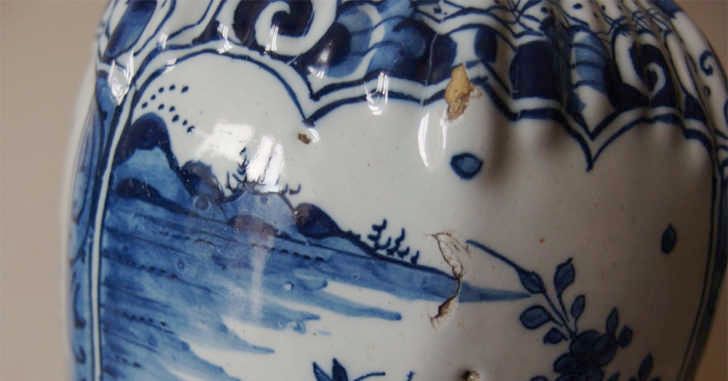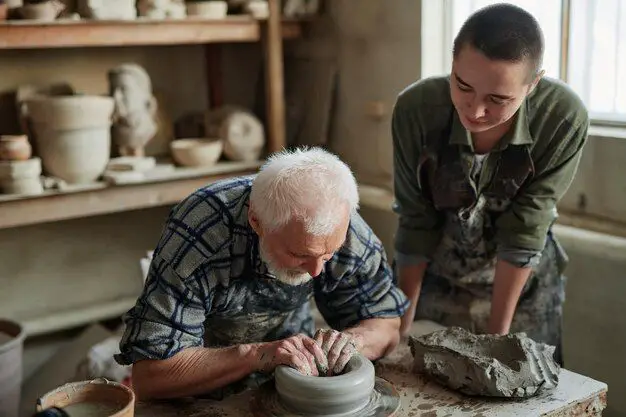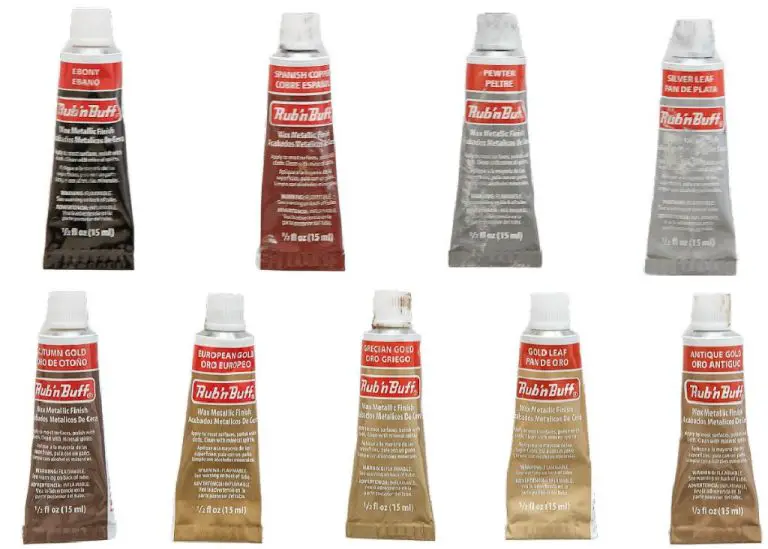How Can You Tell If Something Is Real Delft?
What is Delft?
Delft pottery refers to the iconic blue and white glazed earthenware that originated in the city of Delft in the Netherlands in the early 17th century. According to the Delft Wikipedia page, the earliest production of Delft pottery emerged around 1610-1625 when potters began using tin-glazed earthenware techniques influenced by trade with Italy and the Near East. Delftware became highly popular and was exported widely across Europe and to colonies in Asia and America.
Delft pottery is known for its hand-painted blue designs on a white tin-glazed background. Common motifs include romanticized Dutch village and landscape scenes, Chinese-inspired patterns, sea creatures, flowers, and geometrics. The cobalt blue pigment provides a distinctive color that made Delft pottery internationally recognizable. Delftware was produced in vast quantities in standardized molds but the hand-painted designs made each piece unique.
Today, antique Delftware is highly valued by collectors and decorators. Some rare pieces have sold for tens of thousands of dollars at auction. While original antique Delft is rare, many modern Dutch factories such as Royal Delft still produce Delftware using traditional techniques and designs, continuing the Delft legacy into contemporary times.
Identifying Real Delft Marks
One way to determine if a piece is real Delft is to examine the marks on the base or back. Authentic Delft pottery will often have marks consisting of letters, numbers, or figurative symbols that indicate the factory where the piece was made.
Some of the most well-known Delft factories that marked their wares include De Porceleyne Fles, De Metaale Pot, De Grieksche A, De Pauw, De Witte Star, and De Porceleyne Schotel. Marks may include the full factory name, just initials, or a logo or symbol. For example, De Porceleyne Fles marked pieces with “DF” or a sailing ship symbol.
Marks can also provide clues about when a piece was made. Some factories marked wares with a letter code that indicates the year. De Porceleyne Fles, for instance, marked pieces with a single letter from A to Z, then AA, BB, CC etc., allowing collectors to date pieces. Numbers can also indicate the year. Examining known Delft year codes and date marks can help date a piece.
The style and shape of marks also evolved over time, providing dating clues. Very early Delft had unmarked bases. From the late 1600s into the 1700s, marks were often hand-painted in blue. Later on, factories stamped impressions into the clay. Being familiar with the chronology of Delft marks is key to identifying authentic pieces.
Look for Hand-Painting
One of the key indicators of real Delft is hand-painted detailing. Genuine antique Delft was painted entirely by hand, so you should look closely at the brushstrokes and imperfections that reveal the human touch.
Examine areas like flowers, leaves, borders, and textures. Hand-painted Delft will show slight variations in the thickness of lines, unlike mass-produced pieces. You may see the occasional stray brushstroke or paint spatter as well. The painted pattern should not look perfectly uniform. Elements like leaves and petals will have subtle differences if painted individually by hand.
Also inspect the edges where two colors meet. On authentic Delft, the boundaries will not be perfectly straight, but rather show signs of a slight wobble or imperfection that comes from hand-painting. The glaze pooling may also be uneven. If the paint application looks too precise and mechanical, it is likely not true antique Delft.
According to experts, it takes great skill and years of experience to master the delicate hand-painting of Delft ware (https://thepotterywheel.com/identify-delft-pottery/). When examining an antique piece, the brushwork should show the hallmark of this human craftsmanship.
Examine the Clay

Authentic Delft is made from a specific type of earthenware clay that has unique properties. According to Delft Clay, real Delft clay is an air-drying earthenware clay that is plastic enough to push crisp detail into a mold, yet strong enough to maintain that detail as it dries. The clay contains sand to prevent excessive shrinkage and cracking. Delft clay can be distinguished from other clays by its light gray color and fine, smooth texture.
Genuine antique Delft tends to have substantial weight and thickness. Modern reproductions are often thinner and lighter. Examining the heft and density of a purported Delft piece can help determine authenticity. The clay body should feel dense, hard, and almost stone-like when tapped.
Assess the Glaze
The glaze on genuine Delft pottery was made with a specific formula that creates a unique appearance and feel. According to Delftware.nl, the original Delft glaze contained the following ingredients:
- Lead oxide
- Quartz or ground sand
- Sodium oxide
When fired, these ingredients produce a opaque white glaze with a glossy, shiny finish. The glaze should feel smooth to the touch. Authentic antique Delft will have crazing, which is a network of fine cracks in the glaze caused by aging over centuries. The glaze may also show minor imperfections like small pits or speckles which are indications of handmade production methods.
Beware of modern replicas with a thick, artificial-looking glaze that lacks the depth and subtlety of real Delft porcelain. The glaze should not feel overly glossy or have the plastic-like consistency of resin.
Study the Colors
One of the most recognizable features of real Delft is the signature Delft blue coloring. This vibrant blue shade resulted from the limited pigments that were available when Delft was first produced in the 17th century. The potters originally used cobalt blue pigment imported from Persia to create the distinctive blue-and-white designs.
Over time, cheaper substitutes replaced the Persian cobalt. Potters began using synthetic cobalt, indigo, iron oxide, copper, and other available pigments. These limitations produced the unique, earthy Delft blue palette that ranges from light sky blue to dark midnight blue.
Authentic antique Delft will exhibit some variation in the blue coloring due to the natural pigments used. The blue may have an aged, faded, or mottled look. Be wary of pieces with a flat, consistent royal blue coloring, as this likely indicates a modern reproduction. When examining Delft, pay close attention to the blues for signs of natural imperfection.
For more details on Delft blues, see this helpful guide: Delft SW 9134 | Blue Paint Colors
Check for Crazing
Crazing refers to the fine cracks that develop in the glaze of ceramic pieces over time. These hairline cracks form a network resembling a spiderweb across the surface. According to Little Vintage Cottage, crazing occurs when the glaze and clay body expand and contract at different rates as temperatures fluctuate. While unsightly, it does not affect the structural integrity of antique Delft.
In fact, the presence of crazing can help authenticate antique Delft pieces. As noted by Dusty Old Thing, minor chips darkened by age along with deep crazing often indicate very old Delft. The crazing develops gradually over decades and centuries of use. Pieces without crazing or only superficial crazing may be newer replicas. Look for fine dense networks of cracks across the glazed surface as a sign of authentic age.
Be Wary of Repairs
One of the biggest impacts on an antique Delft piece’s value is the condition it’s in. Repairs made to hide cracks, chips, dents or other damage will significantly decrease the value of a Delft piece. According to one antiques appraiser, “Condition is paramount when determining values” (Source). Even expertly done repairs that are barely detectable will still negatively affect value compared to an original undamaged piece.
Signs to look for include mismatched glaze colors around repaired areas, obvious glue or filler lines, inconsistent crazing patterns near repaired breaks, and excessive grinding or polishing around damaged sections. While some collectors do not mind repairs as long as they are disclosed, a piece with original intact glaze will always be preferred. Minor flaws that have not been repaired may even be seen as a positive, proving the authenticity and antiquity of a Delft piece. However, significant repairs can decrease value by 50% or more compared to a flawless example.
In the end, condition is a major factor in Delft value, and repairs negatively impact that. Focusing on pieces with original glaze and minimal damage is key for collectors looking to maximize investment potential.
Learn the Styles
Delft pottery encompasses a wide range of styles that developed over the centuries in the city of Delft in the Netherlands. Some of the major styles of Delft pottery include:
Early Delft (1500s-1600s): Characterized by simple blue and white designs on majolica influenced pottery. Common motifs included flowers, animals, and architectural elements. Shapes included plates, bowls, jugs, and apothecary jars.[1]
Flemish Style (1600s-1700s): Introduced detailed artwork, often copying designs from Flanders. Scenes included windmills, fishing villages,Biblical motifs, and portraits on apothecary jars, jugs, and plates. Intricate cobalt blue designs on white background.[2]
Chinese Style (1600s-1800s): Mimicked Chinese porcelain with hand-painted blue and white designs often depicting Chinese figures and landscapes. Created vases, tea sets, figurines, and tiles in this style.
Italian Style (1600s-1700s): Inspired by majolica techniques from Italy with multicolor palettes and floral designs. Jugs, bowls, and pharmacy jars painted with flowers, fruits, and scrolling vines.
Rococo Style (1700s): Ornate, playful artwork in an opulent style with pastel colors and lavish gold leaf accents. Decorated vases, centerpieces, and figurines.
Neoclassical Style (late 1700s): Return to simpler blue and white motifs but with more precise paintings. Depicted Greek and Roman imagery like vases, medallions, and column capitals on tiles, tableware, and ornaments.
When in Doubt, Consult an Expert
If you want to confirm whether an item is real Delft, it’s best to consult a professional appraiser or authentication expert. Here are some options for getting a piece professionally evaluated:
Options for Professional Authentication
- Contact an antiques dealer or auction house that specializes in Delft. Reputable dealers can examine the object first-hand and provide an assessment.
- Work with an independent appraiser or authentication service. Look for professionals accredited by organizations like the Appraisers Association of America.
- Send clear, detailed photographs to an online appraisal service. They can provide a preliminary authentication based on images.
- Take the item to an antiques show or fair and get opinions from multiple Dealers.
What to Look for in an Appraiser
When selecting an appraiser, make sure they have specific expertise in Delft pottery. Look for:
- Membership in professional organizations like the Appraisers Association of America.
- Experience authenticating and appraising European porcelain, especially Dutch Delft.
- Knowledge of Delft history, styles, techniques, and marks.
- Familiarity with common Delft repairs and alterations.
- Ability to properly date pieces based on style and markings.
A qualified Delft expert can examine all details firsthand and provide a credible authentication assessment. They can also appraise the item’s current market value if desired.



